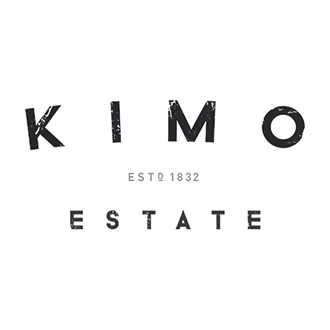Kimo (Ky-mo) is a 7000 acre working sheep and cattle farm It is one of the oldest properties in this region and it’s history is filled with interesting people. From illegitimate french royalty to legitimate Australian Royalty the history of Kimo is a fascinating tale, and especially interesting is the obvious power that existed in the emerging colony in agriculture and land ownership that brought simple farmers to be in elevated positions of power and fraternising with politicians and even Governors, all on the lawns of Kimo Estate….
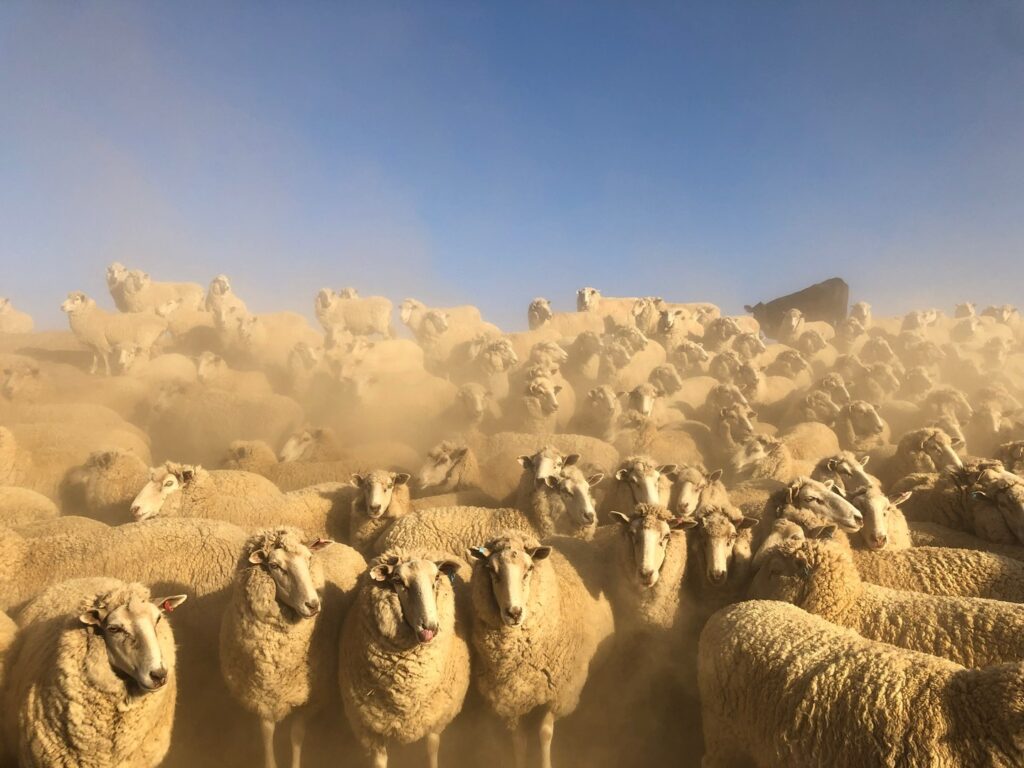
The First White Settlers
Kimo (circa 1830-1832) was first used by several squatters who seemed to have no official ownership of the land. So to talk about the very early history has much to do with whom used the land rather than who owned the land.
Mr William Guise was one who laid claim to the an early parcel of land beginning at Mt Kimo and existing downstream of the of Stuckey’s Ford and the area of Gundagair (an old name for Gundagai). William Guise was a professional squatter at the time and occupied many early runs including Bywong station. Richard (his brother) and William expanded their holdings rapidly in the 1830’s to include properties at Gunning, Gundaroo, Yass, Benenborough, Walwa, Bong Bong, Burra, Twofold Bay, Williamsdale, Hay, Groongal Station as well as properties further south at Buluko and Cunningdroo at the junction of Tarcutta Creek with the Murrumbidgee. This run was soon after merged into their ‘Borambola’ holding. The need of defined boundaries in these days is well indicated by a claim made by the Guises to the possession of “all the country between the Murrumbidgee and the Murray above Albury” which takes in hundreds of thousands of acres. Of note is one particular property at Khancoban (or better known as swampy plain at the time) South east of Fringembrong on the Swampy River. It was first formed by William Guise in 1838, it then passed to Mr John Hay who we hear about later in the history of Kimo. It was rumored that William’s Father, Richard Guise (or De Guise as they were known in france) was the illegitimate son of french royalty. Regardless of that he was related to Mary Queen of Scots through his well connected family.
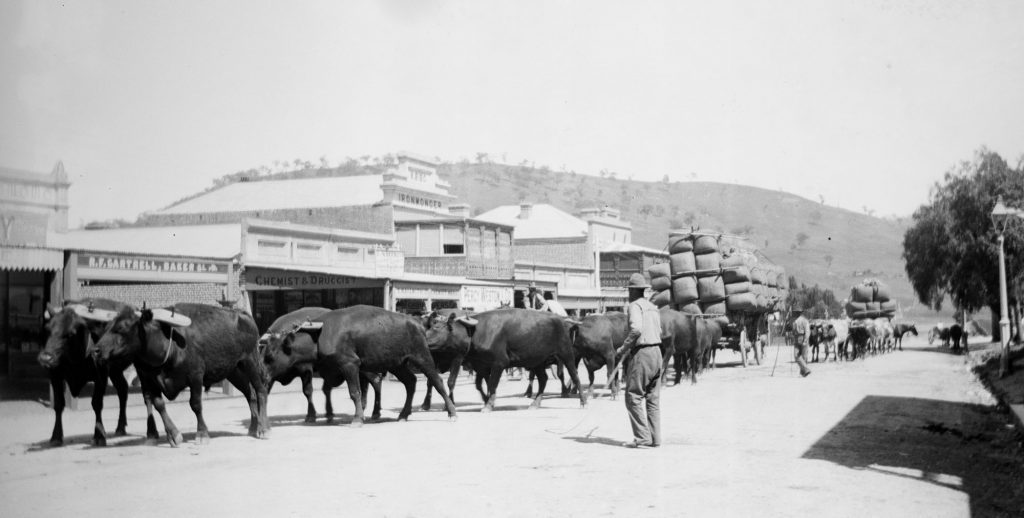
The oldest building on the property, which was built at that time is the original slab hut on this part of Kimo, it is debated as to whether this hut was the hut that housed another set of custodians in the Thompsons who are rumored to have occupied a slab hut near Nargoon (before the great flood). Nevertheless the hut (circa 1835) which has been lovingly restored was active operating the dairy that was set up on Dairy Creek (now known as the long tunnel creek – named after the future gold mine). This charming piece of history in now used as the office of Kimo Estate.
Charles Thompson (Whom which Thompson St in Wagga is named after) arrived at the foot of Mount Kimo in 1830, after hearing of rich alluvial flats from Sturts exploration and steaked his claim to the land on the north side of the river. Later he laid claim to all the land from there to Wagga Wagga and in 1837 a formal government licence scheme for squatters was introduced with Charles very keen to apply. Charles was hereby granted licence no.155 (later no. 42) for his stations: Kimo, Oura and Eunonyhareenyha. Soon after a series of “dry spells” (or droughts) ensued across most of the country over the next decade compounded by a recession which hit the colony in the 1840’s, Thompson fell into financial trouble and was initially forced to sell all of his Kimo stock (in total 5471 sheep). He re-organised his holdings, deciding to hold onto Kimo and early in the spring of 1841 moved his family to Kimo. The site of their simple slab hut residence is said to be opposite Nargoon and this is where their fourth child Elizabeth Anne Thompson was born. Late in 1843 with worsening economic conditions for both the colony and Charles himself, the lease and improvements at Kimo were sold.
Economic Turbulence
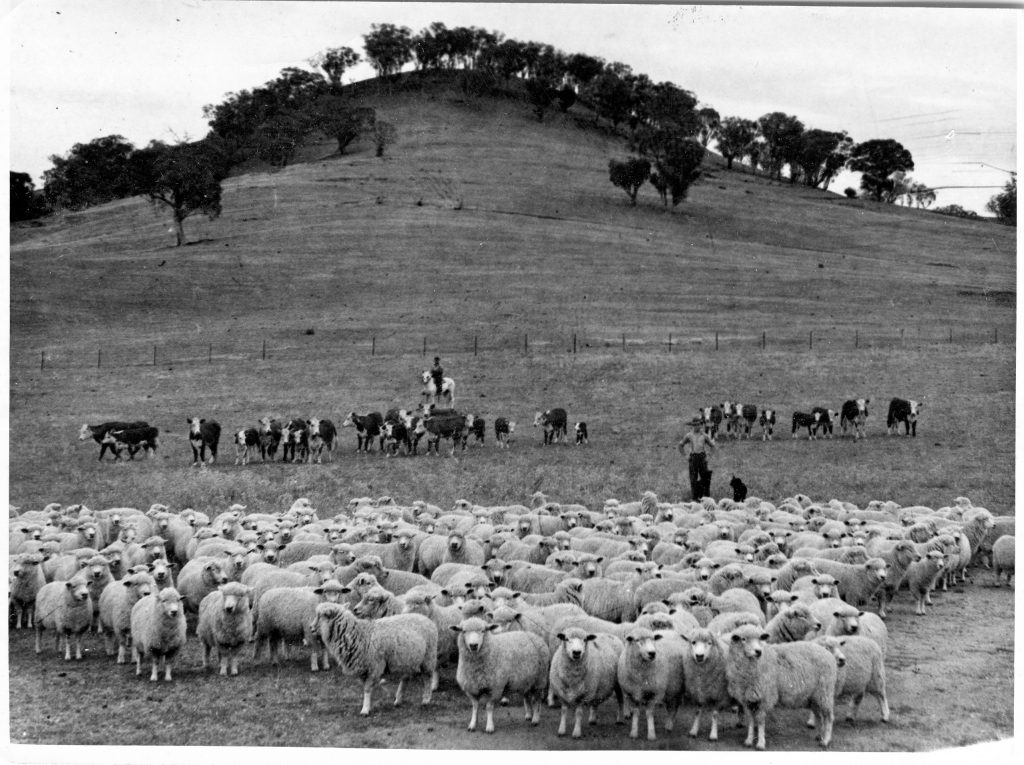
Joseph Andrews is considered the “Father of Gundagai”, established the first public house in Gundagai and also took up a post office as well as various other businesses in the area, known at the time as Stuckey’s Ford. “Major” Joseph Andrews (who was in fact not a major but a sergeant – it seems he gave himself a promotion or two and a commision upon his Australian Adventure) got wind of Thompson’s impending economic downfall, the overseer of the Kimo run drank at Andrews’ inn, and as the adjoining runholder (A run initially called Brodribb’s Run, but changed by Andrews to Gundagai) he saw an opportunity to pounce. The price of sheep was so low at the time that Thompson was ordered to sell his sheep, that combined with the fine quality of the animals (that were of Macarthur bloodlines from the Nangus run next door), Andrews bought the sheep. Just days later he also purchased a series of lot’s in the “paper town” of Gundagai, which set him on a path to his amazing future. He also expected that the Kimo run may, in the near future, become available.
Andrews was a close personal friend of Fred Thompson (Charles’ Son who frequented the inn) and it was his suggestion to his father that Andrew’s be encouraged to purchase Kimo at the auction and on the 5th November 1844 Mr Joseph Andrews became the owner of the Kymo (as he preferred to spell it because it was how it was pronounced) lease. Over the years Joseph became more and more enamoured with the life of a farmer that he eventually gave away his in to his soon to be Son-in-law and daughter and while still maintaining a house near town moved to Kymo. In 1847 the land laws were to be amended and Andrews definitely sought to secure his two Runs. In 1848 the application was formally gazetted as consisting of an estimated area of 9,800 acres, bordered by and including the Gundagai Run (where the town of Gundagai now sits) to the east and the Nangus Run to the west (owned by Sir William Macarthur and his brother James – Sons of John).
In April of 1848 Andrews began to have his luck turn, a successful decade had seen him build an impressive wealth but when his flock developed a catarrh outbreak, his luck took a turn for the worse. Of the flock of over 9000 at the beginning of the year , only 700 ewes and 400 weathers survived the onslaught of the disease and yet another crippling drought. Andrews sought an extension of his loan from the bank, which was granted, however a stipulation of the loan was that the run leases be transferred into the name of Mr J Black (the bank accountant). Another blow at this time was the successful claim from a rival squatter (O’Brien) of his Kymo and Gundagai leases, it would take more than a year for the matter to be disputed through the courts. By January the entire flock of Kymo had perished, Andrews was struggling financially and his bank was increasing the pressure on him. He moved into cattle and immediately struck problems, the animals he purchased took it upon themselves to continually return to their home, made easier due to the unfenced run. He also struck another drought and lost stock from malnutrition. One shining light however was it was announced that the boundaries of the Kimo and Gundagai Runs were reinstated to Mr Andrews. Finally in July 1850 the properties were sold, Kymo to the Collins Brothers and Gundagai to Colin McDonald. Andrews settled his debt with the bank and had a healthy surplus of funds which made him a wealthy man.
Granville Collins and his brother Alexander purchased the Kymo property. In 1555 Gundagai Run was also purchased by the Collins brother and the property was once again joined. Almost immediately their sheep flock struck trouble, the disease was said to be so severe that he lost as many as 4 out of 5 sheep from the disease. He later turned to cattle but apparently ran into trouble again “…it was the 1870 flood which practically ruined Collins of Kimo, for it swept his cattle past Wagga”. The Collins brothers sought to sell Kimo to move onto other agricultural pursuits elsewhere.
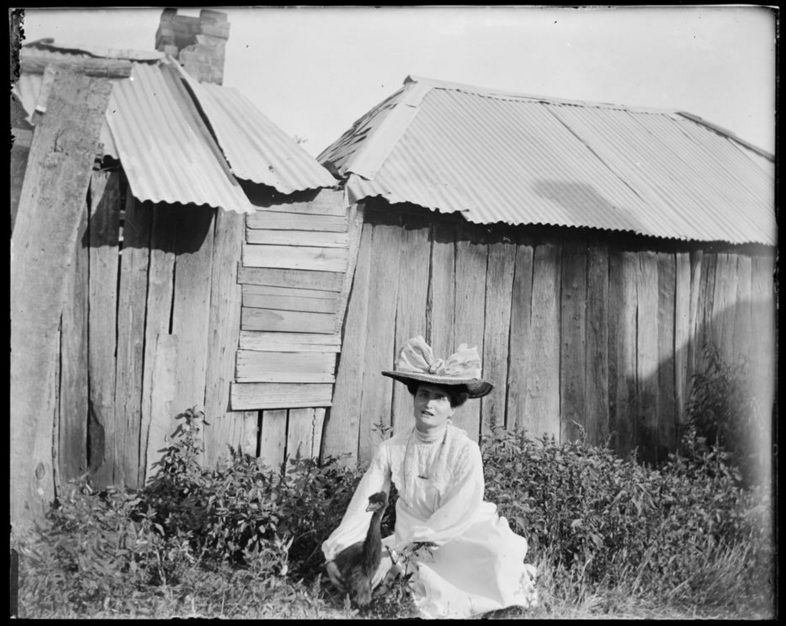
A transfer of the runs in 1860 occurred from Granville and his brother Alexander Collins to a Mr John “Swampy” Hay, whom was a friend of the Robinson Family from the Upper Murray, he was the neighbour of William Guise and was also a brother-in-law of the next owner James Robinson. It appears that this may have been some sort of rouse to acquire land- without actually acquiring it if you know what I mean. In any case by 1865/66 the owner is listed at the Bank of New South Wales, which means that Mr Hay couldn’t afford it and it was sold up. Having known the land through Hay I can only assume that James Robinson saw the potential of the land and sought to purchase it from the bank.
The Golden Years Begin
It was purchased by James Robinson (formerly of Coppabella in the upper murray) in 1870 and after moving to Kimo in 1872, he set about improving the land and buildings. He was the first person on the Murrumbidgee to ringbark trees as a way of clearing the land and is credited with most of the improvements that still stand today. Most Notably the Woolshed, the Grain Shed and the Homestead
James Robinson was an amazing business man and he set about creating one of the finest properties in the state. Under his tenure the property grew in productivity. The land remained roughly the same size (stretching from and including Abingdon all the way into and including Gundagai). James Robinson was also a philanthropist of some note, donating land for the new (now old) hospital and also land for one of his great passions. Horse Racing. One interesting story of James Robinson was of his involvement in a syndicate of a dozen or so men that organised for the famous Phar Lap’s body to be returned to Australia following his mysterious death in America. Phar Lap’s famous saddle cloth can still be seen at the local Gundagai museum along with many artifacts donated by Mr Robinson and his family. It is at this time that the name seems to change from Kymo (as listed in many official documents and changed by Joseph Andrews) to it’s current and original spelling of Kimo.
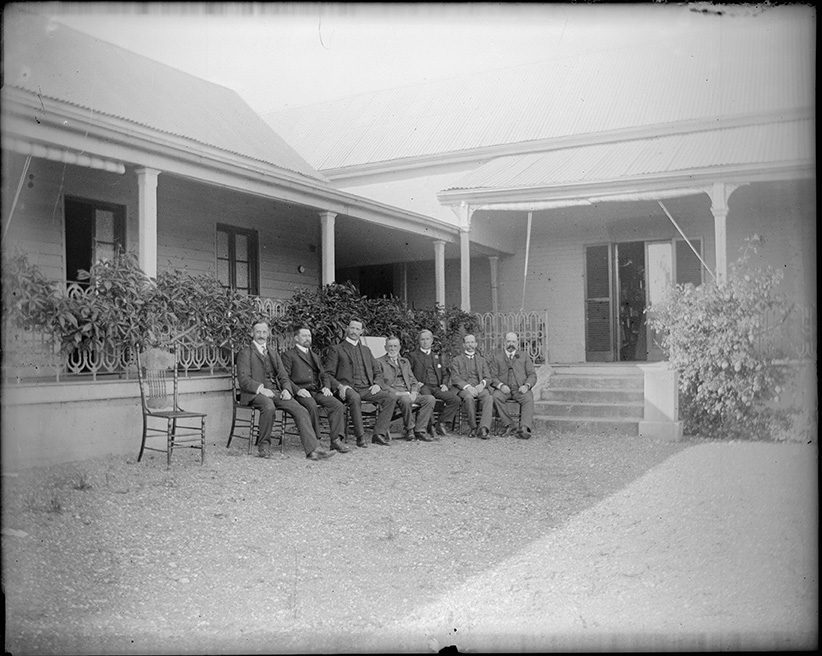
The house itself has been built in three very distinctive eras, the first section in timber (1872) by James Robinson, The next section in hand made clay bricks (with clay from Kimo) (1910’s). It is believed that Jame’s Wife Edith had the wing added onto the original house while James had been travelling overseas purchasing sheep and he returned home to the new addition. The third section was added by it’s current owners, in double brick (1985) and in keeping with the second section.
The Rest is History…
Through great droughts, great floods and also through periods of prosperity these pioneers of rural Australia, James Robinson and his descendants, continued to own and run Kimo for over 100 years. The property was broken up and sold off or split up, over time being reduced to 2500 acres when it was sold to it’s current owners, Christine and Colin Ferguson formerly of Ruffy.
The Ferguson family have been in agriculture for countless generations. Coming to Australia in the early 1800’s, arriving in Port Phillip to assist John Batman with his stock in the new colony. They are the same Fergusons of Flowerdale Estate in Victoria, then Tarcombe Station and then of Strathearn in Ruffy.
The Ferguson Family has owned and operated Kimo as a farm since 1978 and have managed to nearly triple Kimo in size over that time. The house has been restored over the years, as has the beautiful Garden.
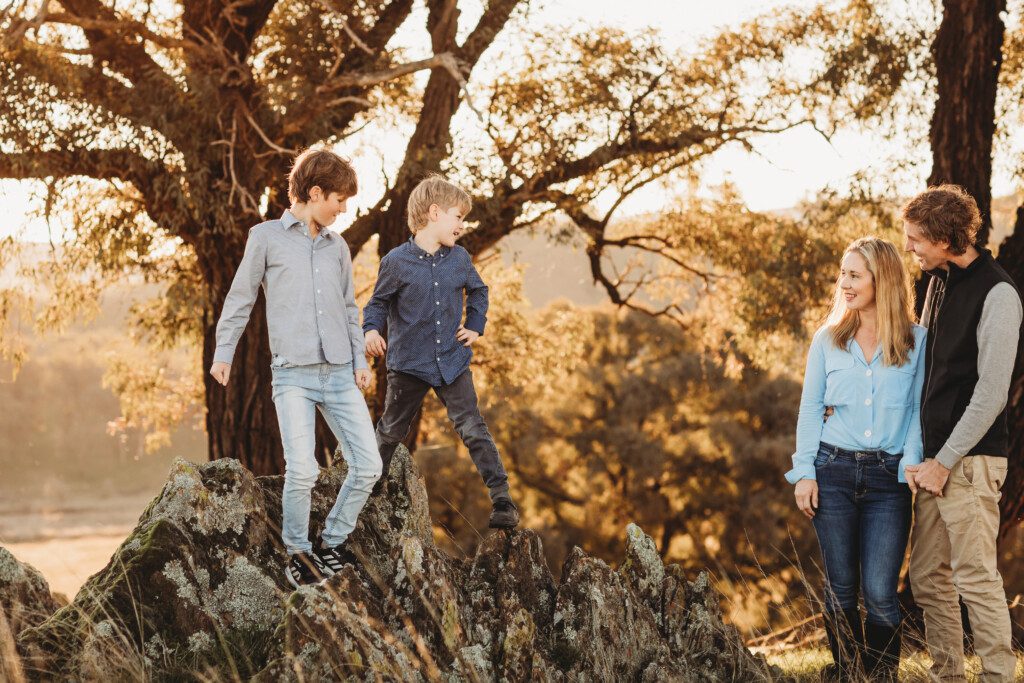
Kimo Estate is still home to the Ferguson’s but now a new chapter in this old estate is unfolding. David and Emelia Ferguson and their young boys Archie and Max now have the responsibility of continuing this great tradition of guardianship over one of the finest country properties in Australia.
